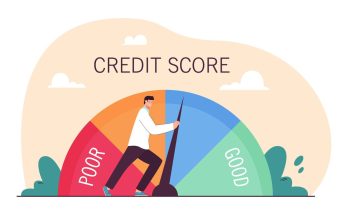Today’s fast paced digital environment makes it crucial to teach kids about money, particularly cryptocurrency. Teaching youngsters about digital currencies early on may help them make educated choices when they become more mainstream. This article covers three significant areas of crypto education for youngsters.
Understanding The Basics Of Cryptocurrencies
Teaching kids about cryptocurrency starts with the fundamentals. This covers defining cryptocurrencies, how they function and their rising popularity. Crypto educators must simplify complex subjects into manageable chunks.
Start by defining cryptocurrencies as digital currency secured by encryption. Coins use blockchain technology to run decentralized networks unlike dollars and euros. Encourage students to see blockchain as a safe transparent digital ledger.
Introduce Bitcoin and Ethereum stressing their distinct characteristics and uses. Bitcoin is sometimes called digital gold and utilized as a store of value and means of transaction. However Ethereum smart contracts enable developers to construct dApps on its blockchain.
The pros and cons of cryptocurrency must also be discussed. They provide tremendous financial innovation, inclusion prospects, volatility and security risks. Financial literacy requires teaching youngsters to be cautious and skeptical of cryptocurrencies.
Exploring Real World Applications
Real world cryptocurrency applications and use cases may engage students in crypto education. Display how digital currencies are utilized in banking gambling , healthcare and supply chain management.
Explain how cryptocurrencies enable peer to peer transactions without intermediaries lowering transaction costs and improving financial inclusion particularly in underprivileged populations. Show how cryptocurrencies are becoming popular by listing companies that accept them.
Teach students how non fungible tokens NFTs are changing art and entertainment. Show them digital art music and artifacts marketed as NFTs to inspire them.
Real world applications show youngsters how cryptocurrencies can be used in their everyday lives and future jobs motivating them to learn more about this fascinating topic.
Promoting Responsible Financial Habits
Responsible financial habits are one of youngsters’ most crucial crypto education lessons. Teach children about budgeting, saving and investing stressing the need to make informed choices based on financial objectives and risk tolerance.
Differentiate investing from speculating and emphasize the need for comprehensive study before investing. Encourage youngsters to start modestly and diversify their investments to reduce risk.
Discuss the importance of cryptocurrency security. Protect their private keys and use trusted Bitcoin wallets and exchanges. Stress how to spot and prevent fraud and phishing attempts.
Promoting healthy financial practices may help students manage their money and succeed in the digital era.
Encouraging Innovation And Entrepreneurship
Crypto education promotes entrepreneurship and creativity. By exposing youngsters to blockchain and cryptocurrency we can motivate them to think creatively and find new ways to solve issues and generate value.
Please encourage students to create blockchain based initiatives or enterprises that help their communities or solve global problems. The possibilities are limitless such as creating a decentralized marketplace for exchanging products and services or a blockchain based school election voting system.
Explain tokenization and how it may represent ownership rights to property art and intellectual property to youngsters. Kids may conceive creative ways to use tokens for profit by learning how they unleash liquidity and permit fractional ownership.
Promoting Financial Inclusion And Economic Empowerment
Cryptocurrencies may empower marginalized populations financially and economically, a significant benefit. Crypto education for children may help raise awareness of these prospects and bridge the unbanked traditional financial divide.
Start by addressing how high costs, lack of identity and geographical restrictions hinder many individuals from using conventional banking services. Explain how cryptocurrency may let individuals engage in the global economy without traditional financial infrastructure.
Showcase the successes of people and communities worldwide who have used bitcoins for remittances, microloans and crowdfunding. Show students how blockchain technology empowers peer to peer lending crowdfunding and microfinance and gives them financial control. By fostering financial inclusion and economic empowerment via crypto education we can teach youngsters how digital currencies may create a more equal and inclusive society.
Addressing Ethical And Social Implications
Education on cryptocurrency must address this fast growing technology’s ethical and societal implications. Discussing decentralization privacy and governance encourages youngsters to think critically about cryptocurrency social consequences. Explore how blockchain technology may improve government and business transparency and accountability, decrease corruption and build trust.
Discuss the hazards and problems of privacy and data protection in a decentralized environment challenging youngsters to weigh security against convenience. Educate students about the environmental effects of bitcoin mining and energy consumption and encourage them to choose eco-friendly blockchain solutions.
Integrating Crypto Education Into School Curricula
Adding crypto education to the school curriculum may help students accept it. By teaching children about blockchain technology cryptocurrencies and financial literacy in math economics and computer science we can prepare them for the digital age.
Schools may work with industry experts, educators and legislators to create an age appropriate curriculum that meets academic requirements and learning goals. Interactive exercises, simulations and case studies can make cryptocurrency learning entertaining and relevant for students.
Teachers may use technology to provide virtual field excursions to blockchain organizations, guest lectures from industry experts and hands-on coding workshops where students can design their blockchain apps.
Empowering Parents And Guardians
In addition to proper education parents and guardians must be empowered to assist their children with cryptocurrency learning. Parents may feel scared by digital banking but tools and assistance may help them feel secure educating their kids about cryptocurrency.
Create seminars, webinars and community events to teach parents about blockchain cryptocurrency and internet safety. Provide realistic advice on discussing finances with their kids and navigating the internet.
Promoting Diversity And Inclusion
To make crypto education accessible to all students we must encourage diversity and inclusiveness in business and education. To ensure various opinions are heard and respected we should encourage women minorities and low income people to participate.
Create outreach scholarship and mentoring initiatives for underprivileged populations to lower crypto entrance hurdles and increase success partner with neighborhood groups NGOs and grassroots efforts to reach marginalized people and help them succeed.
Conclusion
Crypto education for youngsters may shape their financial and technological knowledge. Teaching youngsters about blockchain cryptocurrency and financial literacy helps them navigate the digital economy with confidence and responsibility.
We can guarantee that all children get the skills they need to succeed in the digital era by incorporating crypto education into school curriculum empowering parents and guardians and encouraging diversity and inclusion. With an excellent crypto education foundation we can train our young to be aware, ethical and empowered in the changing digital money ecosystem.



